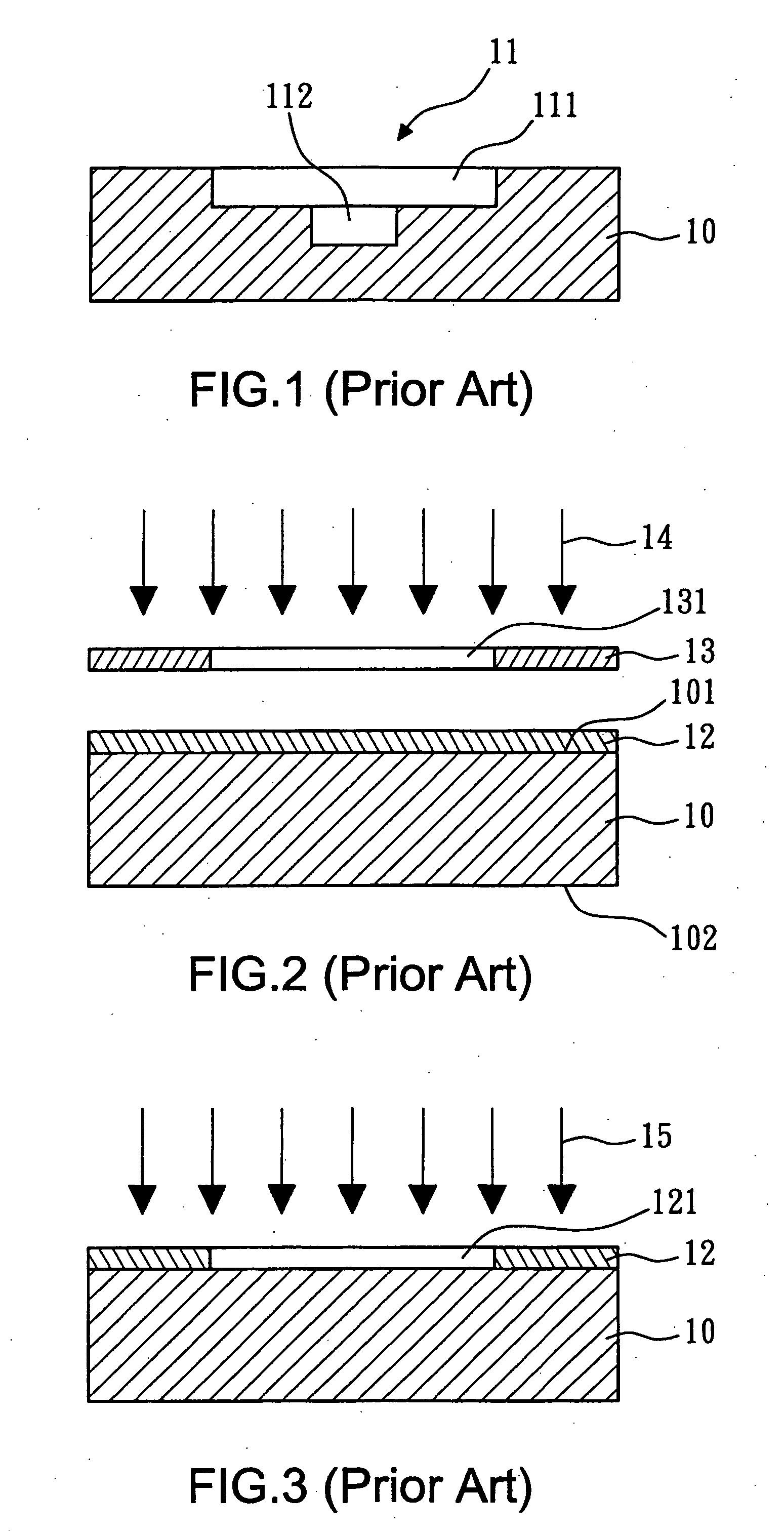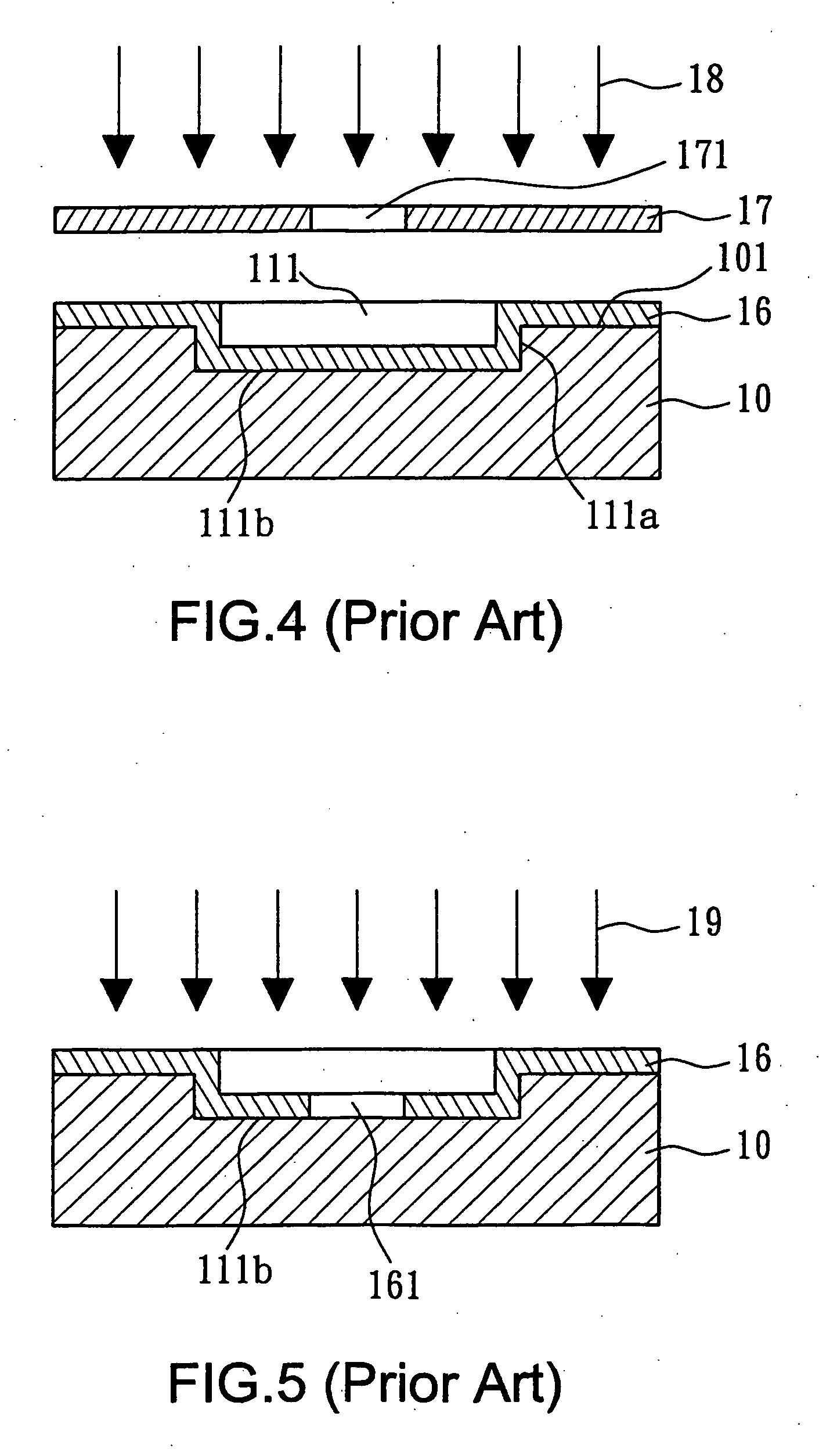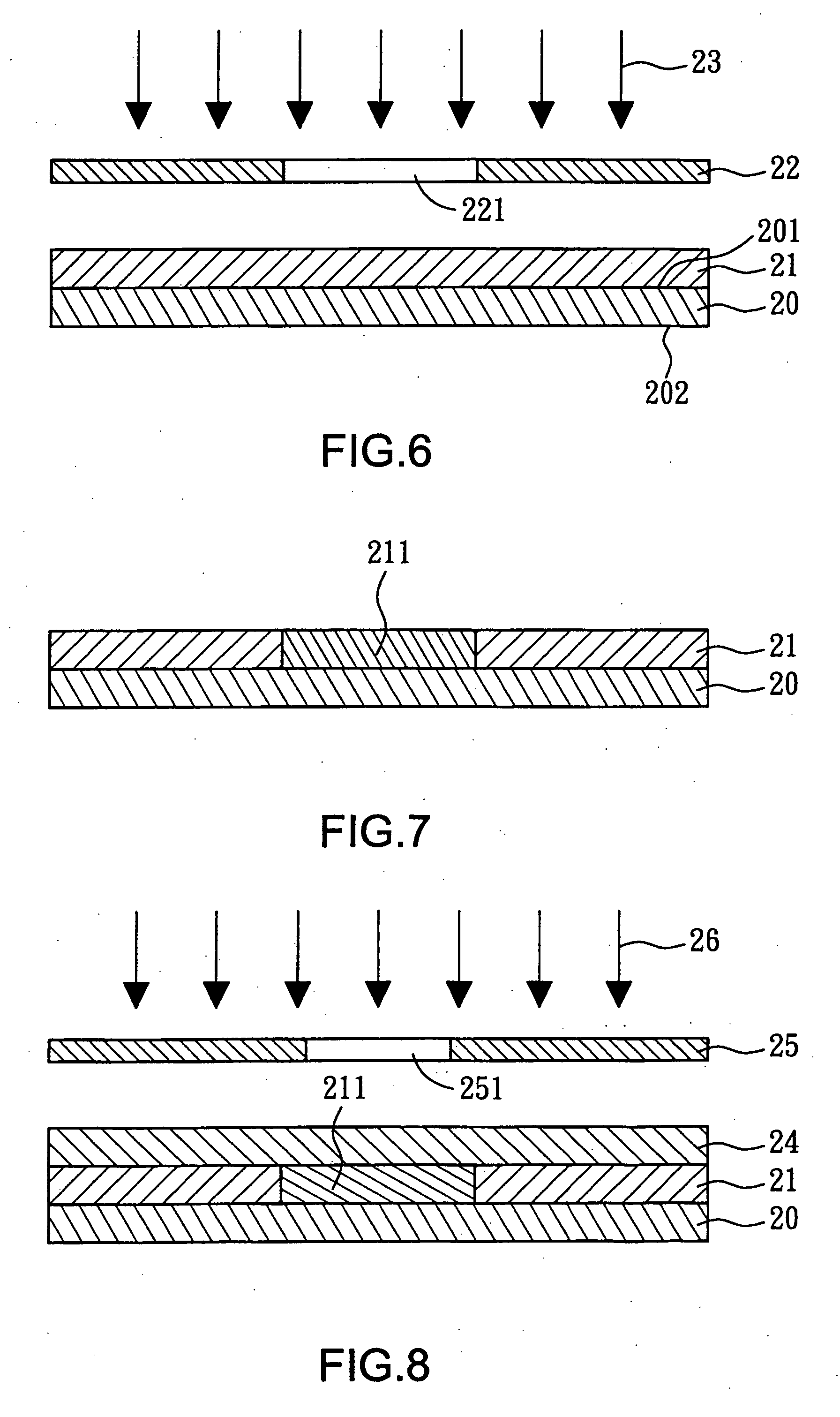Multi-layer photoresist and method for making the same and method for etching a substrate
a photoresist and multi-layer technology, applied in the field of photoresist and the method for making the same, can solve the problems of long manufacturing time, unsatisfactory coating effect of the second photoresist layer, and complicated steps of the method, and achieve the effect of improving etching quality and high efficiency
- Summary
- Abstract
- Description
- Claims
- Application Information
AI Technical Summary
Benefits of technology
Problems solved by technology
Method used
Image
Examples
Embodiment Construction
[0032] Referring to FIGS. 6 to 11, schematic views of the method for making a multi-layer photoresist according to the present invention are shown. The method of making the multi-layer photoresist of the present invention comprises the following steps.
[0033] First, referring to FIG. 6, a substrate 20 (e.g., a micro-accelerometer of an optical waveguide element) is provided, and the substrate 20 has an upper surface 201 and a lower surface 202. Next, a first photoresist layer 21 is formed (e.g., coated) on the upper surface 201 of the substrate 20. Then, an exposure procedure is performed on the first photoresist layer 21, such that the first photoresist layer 21 has a first photoreceptive area 211, as shown in FIG. 7.
[0034] In this embodiment, the exposure procedure is described as follows. Referring to FIG. 6 again, firstly, a first mask 22 having a first mask pattern 221 is provided. Next, a first light beam 23 is provided, the first light beam 23 goes through the first mask pat...
PUM
| Property | Measurement | Unit |
|---|---|---|
| aspect ratio | aaaaa | aaaaa |
| area | aaaaa | aaaaa |
| shape | aaaaa | aaaaa |
Abstract
Description
Claims
Application Information
 Login to View More
Login to View More - R&D
- Intellectual Property
- Life Sciences
- Materials
- Tech Scout
- Unparalleled Data Quality
- Higher Quality Content
- 60% Fewer Hallucinations
Browse by: Latest US Patents, China's latest patents, Technical Efficacy Thesaurus, Application Domain, Technology Topic, Popular Technical Reports.
© 2025 PatSnap. All rights reserved.Legal|Privacy policy|Modern Slavery Act Transparency Statement|Sitemap|About US| Contact US: help@patsnap.com



